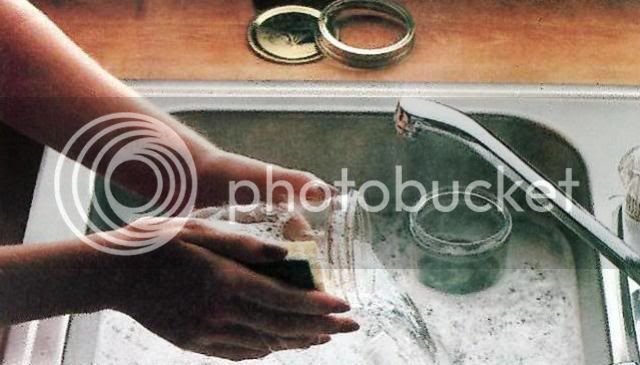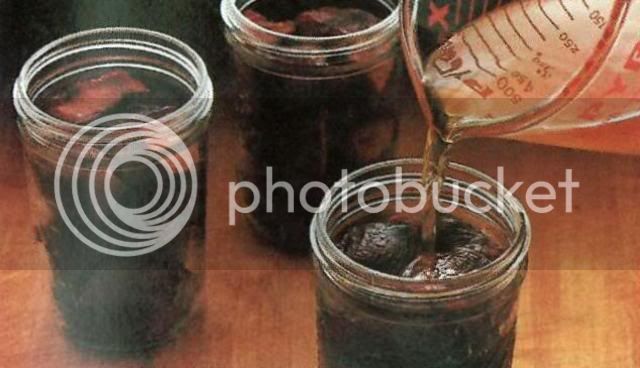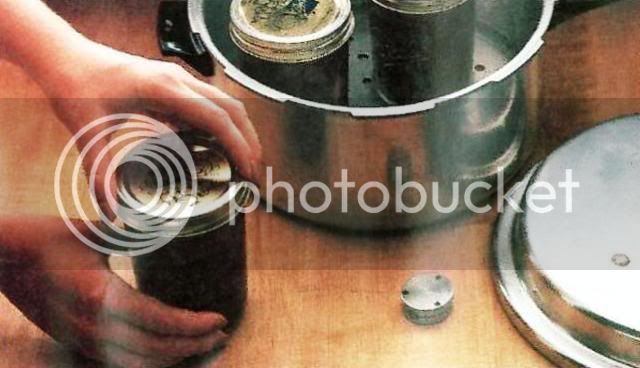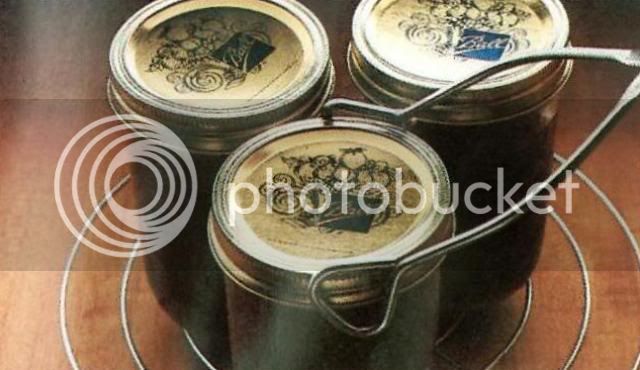TasunkaWitko
Well-Known Member
Smoky Canned Big Game Chunks
This recipe is adapted from The Hunting and Fishing Library, with some notes regarding smoking etc. Step-by-step photos are from The Hunting and Fishing Library's Dressing and Cooking Wild Game volume.
For 3 pounds boneless big game steaks or other large cuts, 3/4 to 1-inch thick:
Marinade (for each three pounds of meat):
1/2 cup soy sauce
1/4 cup vegetable oil
1 tsp. sugar
1 tsp. black pepper
3 cloves garlic, chopped
1/2 tsp. Worcestershire sauce
*Optional - if you do not have a smoker, but still want your meat to have a smoked flavor, add liquid smoke to taste. A suggested place to start is 1 tablespoon.
Canning Broth (for each three pounds of meat):
1 cup venison stock or beef broth
1/4 cup vinegar
1 tsp. sugar
Place meat in a single layer in a large, glass baking dish. In food processor or blender, combine all marinade ingredients; process until smooth. Pour half the marinade over meat. Turn meat over and cover with remaining marinade. Place plastic wrap directly on surface of meat. Refrigerate at least 3 hours.
Note: If you do not have a smoker or prefer meat to be unsmoked, skip the smoking procedure and proceed to the canning procedure.
Smoking:
Prepare hot smoker and soak your favorite wood chips. Hickory, mesquite, cherry, alder, apple or maple are typically used. Fill water pan of smoker about 2/3 full with water.
Drain meat, reserving marinade. Place meat on top and bottom racks of hot smoker. Top meat with thinly-sliced onion, if desired. Smoke meat until meat is medium doneness, usually 2 to 3 hours, basting meat once with marinade and reversing position of the racks. Remove meat from smoker; cool slightly.
Canning:
In medium saucepan, combine all canning broth ingredients. Heat to boiling. Remove from heat; set aside. Cut meat into 1 to 1-1/2-inch chunks.

Wash pint jars, bands and lids in hot, soapy water. Rinse well. Place jars and bands in sink filled with hot, clear water. Place lids in saucepan. Cover with hot water. Heat to barely simmering over low heat.
Cut meat into 1 to 1-1/2-inch chunks. If you skipped the smoking procedure, cook the meat to rare; pack while still hot. Smoked chunks can be packed warm into jars. Whether smoked or unsmoked, leave a one-inch space at top.

Add boiling broth, leaving 1-inch space at top. Wipe rims with clean cloth.

Place warm lids and bands on jars. Tighten firmly, but lightly. Place sealed jars on trivet in pressure cooker. Follow pressure cooker manufacturers directions for number of jars and amount of water to add to cooker. Heat until 10 pounds of pressure is reached, then begin timing. Process for 1-1/4 hours (75 minutes) at 10 pounds pressure.

Allow pressure to drop naturally. When pressure has dropped completely, remove jars with tongs. Place in a draft-free place for 12 hours. Check seals according to lid manufacturers directions. Refrigerate any jars that have not sealed properly; use within 3 days. Store sealed jars in a dark, cool place; use within one year.
This recipe is adapted from The Hunting and Fishing Library, with some notes regarding smoking etc. Step-by-step photos are from The Hunting and Fishing Library's Dressing and Cooking Wild Game volume.
Use this meat to make quick stews, or shred and add to barbecue sauce for unusual sloppy joes.
For 3 pounds boneless big game steaks or other large cuts, 3/4 to 1-inch thick:
Marinade (for each three pounds of meat):
1/2 cup soy sauce
1/4 cup vegetable oil
1 tsp. sugar
1 tsp. black pepper
3 cloves garlic, chopped
1/2 tsp. Worcestershire sauce
*Optional - if you do not have a smoker, but still want your meat to have a smoked flavor, add liquid smoke to taste. A suggested place to start is 1 tablespoon.
Canning Broth (for each three pounds of meat):
1 cup venison stock or beef broth
1/4 cup vinegar
1 tsp. sugar
Place meat in a single layer in a large, glass baking dish. In food processor or blender, combine all marinade ingredients; process until smooth. Pour half the marinade over meat. Turn meat over and cover with remaining marinade. Place plastic wrap directly on surface of meat. Refrigerate at least 3 hours.
Note: If you do not have a smoker or prefer meat to be unsmoked, skip the smoking procedure and proceed to the canning procedure.
Smoking:
Prepare hot smoker and soak your favorite wood chips. Hickory, mesquite, cherry, alder, apple or maple are typically used. Fill water pan of smoker about 2/3 full with water.
Drain meat, reserving marinade. Place meat on top and bottom racks of hot smoker. Top meat with thinly-sliced onion, if desired. Smoke meat until meat is medium doneness, usually 2 to 3 hours, basting meat once with marinade and reversing position of the racks. Remove meat from smoker; cool slightly.
Canning:
In medium saucepan, combine all canning broth ingredients. Heat to boiling. Remove from heat; set aside. Cut meat into 1 to 1-1/2-inch chunks.

Wash pint jars, bands and lids in hot, soapy water. Rinse well. Place jars and bands in sink filled with hot, clear water. Place lids in saucepan. Cover with hot water. Heat to barely simmering over low heat.
Cut meat into 1 to 1-1/2-inch chunks. If you skipped the smoking procedure, cook the meat to rare; pack while still hot. Smoked chunks can be packed warm into jars. Whether smoked or unsmoked, leave a one-inch space at top.

Add boiling broth, leaving 1-inch space at top. Wipe rims with clean cloth.

Place warm lids and bands on jars. Tighten firmly, but lightly. Place sealed jars on trivet in pressure cooker. Follow pressure cooker manufacturers directions for number of jars and amount of water to add to cooker. Heat until 10 pounds of pressure is reached, then begin timing. Process for 1-1/4 hours (75 minutes) at 10 pounds pressure.

Allow pressure to drop naturally. When pressure has dropped completely, remove jars with tongs. Place in a draft-free place for 12 hours. Check seals according to lid manufacturers directions. Refrigerate any jars that have not sealed properly; use within 3 days. Store sealed jars in a dark, cool place; use within one year.



